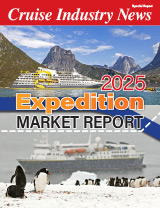With key dates looming – 2016 NOx compliance and a 2018 review of fuel availability ahead of a global cap for SOx emissions, Lloyd’s Register (LR) has issued new guidelines and updated technical information to supports operators’ investment decisions.
This new guidance addresses operational and in-service considerations reflecting further accumulated experience from clients, industry groups and regulators. As well as a focus on exhaust gas treatment (scrubbers), LR said the guidance also examines the wider scope of options for SOx/NOx compliance beyond exhaust gas treatment.
Since an earlier version of this report was issued in 2012, early adopters of the technology, mainly passenger ship and ferry operators, have committed to fleet-wide scrubber implementation programs.
However, in the majority of the tanker, bulk carrier and container segments, the uptake of scrubber technology remains slow. With shorter periods inside Emission Control Areas (ECAs), lower fuel consumption (especially due to slow steaming) and typically lower asset residual values, the business case for installing scrubber technology on deep sea tank, bulk or container ships is not, yet, either strong enough or urgent enough, according to LR.
The classification society also stated that the bunker price collapse during 2014 has been another factor. While the price difference between heavy fuel and distillates has remained relatively constant, the fuel costs inside ECAs have reduced, giving operators more time to consider their options.
Ships constructed after the Jan. 2, 2016 will need to comply with NOx Tier III when trading to the U.S./Canada. Other ECAs for NOx may be introduced in the future affecting, however, only newly constructed vessels.
In 2018, the IMO will publish a fuel availability study determining whether the global 0.50 percent sulfur limit will enter into force in 2020 or 2025. If it is 2020, the implications will be widespread: a possible rapid uptake of scrubber technology and the potential for a dramatic increase in operational costs for those who choose to operate on distillate fuels.
Whether LNG will make the leap from niche fuel to mainstream is a big question, according to LR. Early adopters of LNG-as-fuel could start seeing a real return on their investment and any ‘LNG-ready’ ships may start converting to LNG-fuelled, if and when the bunkering infrastructure develops sufficiently.
The time for decisions is fast approaching. If in 2012 the industry needed to start considering their options, today, in 2015, the time is running out, LR stated. The compliance options are clear. Ship operators need to evaluate compliance strategies specific to their ships, operation and risk criteria.



